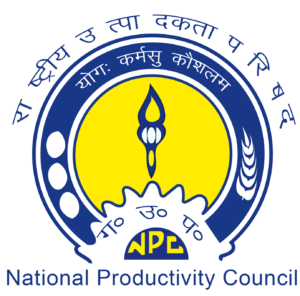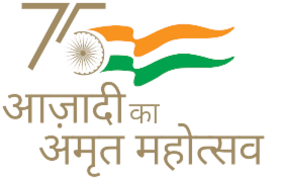Background Note
National Productivity Council (NPC), set up in 1958 by the government of India as an autonomous organization, now under DPIIT, Ministry of Commerce & Industry, GoI has been in the forefront of the productivity movement in India. Its recent contributions for the enhancement of productivity in MSME sector has been tremendous. Besides undertaking research in the area of productivity, NPC has been providing consultancy and training services in areas of Industrial Engineering, Agri-Business, Economic Services, Quality Management, Human Resources Management, Information Technology, Technology Management, Energy Management, Environmental Management etc., to the Government and Public & Private sector organizations. NPC is a constituent of the Tokyo-based Asian Productivity Organisation (APO), an Inter-Governmental Body of which the Government of India is a founding member.
National Productivity Week from 18–23, February, 2023
Every year, on the 12th of February, National Productivity Day is commemorated to promote India’s productivity culture. The theme for the year 2023 is “Productivity, Green Growth and Sustainability: Celebrating India’s G20 Presidency.” National Productivity Week is celebrated from 18-13 February every year and NPC is responsible for the activity.
Purpose of Celebrating National Productivity Week
- To raise awareness of the need of encouraging the use of productivity tools
- To improve procedures by incorporating current, relevant themes
- Promote productivity, quality, efficiency, and competitiveness
- Raise awareness through lectures, workshops, and high-quality events
- Organise seminars campaigns, and provide information on increasing productivity through appropriate ways and motivating toward awards
National Productivity Day significance
National Productivity Day aims to increase awareness about the importance of productivity, innovation, and efficiency. It is critical to raise awareness on productivity to maximize production while maximizing resource utilization. The goal of National Productivity Day and National Productivity Week is to raise awareness about the importance of improving quality, efficiency, and competitiveness in all areas of the Indian economy so that India may become a global leader. The event also aims to promote productivity as a “developing notion” beyond simply boosting output. The NPC wants to emphasize productivity as a holistic concept that considers issues like the environment, quality, and human resource development, among other things.
Background of this year’s theme
Green growth is possible only through sustainable practices, resource efficiency and renewable energy sources. The green growth envisions a future with environmentally sustainable and equitable economic growth, resource security, healthy environment (air, water, and land), and restored ecosystems with rich ecology and biodiversity. The green growth is guided by
- reduction in primary resource consumption to ‘sustainable’ levels, in keeping with achieving the Sustainable Development Goals and staying within the planetary boundaries,
- creation of higher value with less material through resource efficient and circular approaches,
- waste minimization,
- material security, and creation of employment opportunities and business models beneficial to the cause of environment protection and restoration.
For achieving green growth, enhancement of productivity at all levels in industry, service and agriculture sectors is essential. The productivity measurement should include growth in contribution of natural capital and to what extent economic growth has been achieved at the expense of environment quality.
The objectives of productivity week are to deliberate rejuvenating productivity movement for achieving green growth and sustainability through increase in resource efficiency in industry, service and agriculture sectors.
G-20 and its significance
The Group of Twenty (G20) is the premier forum for international economic cooperation. It plays an important role in shaping and strengthening global architecture and governance on all major international economic issues.India holds the Presidency of the G20 from 1 December 2022 to 30 November 2023.
The Group of Twenty (G20) comprises 19 countries (Argentina, Australia, Brazil, Canada, China, France, Germany, India, Indonesia, Italy, Japan, Republic of Korea, Mexico, Russia, Saudi Arabia, South Africa, Türkiye, United Kingdom and United States) and the European Union. The G20 members represent around 85% of the global GDP, over 75% of the global trade, and about two-thirds of the world population.
The G20 Presidency steers the G20 agenda for one year and hosts the Summit. The G20 consists of two parallel tracks: the Finance Track and the Sherpa Track. Finance Ministers and Central Bank Governors lead the Finance Track while Sherpas lead the Sherpa Track. The G20 process from the Sherpa side is coordinated by the Sherpas of member countries, who are personal emissaries of the Leaders. In addition, there are Engagement Groups which bring together civil societies, parliamentarians, think tanks, women, youth, labour, businesses and researchers of the G20 countries.
The Group does not have a permanent secretariat. The Presidency is supported by the Troika – previous, current and incoming Presidency. During India’s Presidency, the troika will comprise Indonesia, India and Brazil, respectively.
The theme for the G20 – “VasudhaivaKutumbakam” (One Earth, One Family, One Future) – establishes that during our Presidency we will “work to promote a universal sense of oneness” to address the challenges that mankind as “one family” faces today. Further, Hon’ble Prime Minister has asked all the citizens to make India’s G20 Presidency “a presidency of healing, harmony and hope”.
2.0 Coverage of activities during productivity week
- Innovation led productivity growth for sustainability
Sustained innovation led productivity growth is the aggregate measure of the outcome of the country’ efforts to raise productivity. It is regarded as the top-ranked, key deliverable since robust, sustained productivity growth fuels green economic growth and higher standards of living. A bigger economic pie resulting from sustained productivity growth also contributes to the reduction of poverty and income inequality over time. The word “sustained” emphasizes the need for productivity growth to continue increasing over the long term, although there may be fluctuations from year to year.
The Government of India has launched Digital India program which is an umbrella programme that covers multiple Government Ministries and Departments. It weaves together many ideas and thoughts into a single, comprehensive vision so that each of them can be implemented as part of a larger goal.Digital India aims to provide the much-needed thrust to the nine pillars of growth areas, namely Broadband Highways, Universal Access to Mobile Connectivity, Public Internet Access Programme, e-Governance: Reforming Government through Technology, e-Kranti – Electronic Delivery of Services, Information for All, Electronics Manufacturing, IT for Jobs and Early Harvest Programmes. Each of these areas is a complex programme and cuts across multiple Ministries and Departments.
- Energy efficiency and promotion of renewable energy
The Energy Conservation Act (EC Act) was enacted in 2001 with an aim of reducing energy intensity of Indian economy. The Act enjoins the Central Govt. and the Bureau to take measures to facilitate and promote energy efficiency in all sectors of the economy. The Act also directs states to assignagencies for the implementation of the Act and promotion of energy efficiency in the state.
Government of India have developed a two-pronged approach to cater to the energy demand of its citizens while assuring minimum growth in CO2 emissions, so that the global emissions do not lead to an irreversible damage to the earth system. On one hand, in the generation side, the Government is promoting greater use of renewable in the energy mix mainly through solar and wind and simultaneously shifting towards supercritical technologies for coal-based power plants. On the other side, efforts are being made to effectively use the energy in the demand side by various innovative policy measures under the overall ambit of Energy Conservation Act 2001.
The Bureau of Energy Efficiency (BEE) has revised the Energy Conservation Building Code for commercial buildings, launched the EcoNiwas Samhita code for the building envelope of residential buildings, and further expanded its standards and labelling programme starting with stronger Minimum Energy Performance Standards for air conditioners.
The integration of renewable energy in the total energy use of the country has manifold rapidly in the recent years and accounts for around 11% of the total electricity generation in the country in year 2020-21 as compared to 5.56% during the year 2014-15. The installed capacity of renewable energy generation has increased from 39.55 GW in the year 2014-15 to 92.54 GW in the year 2020-21, which is an increase of around 134%. India has worked with partners on the International Solar Alliance, the One Sun-One World-One Grid initiative to conduct renewable energy. India has launched Green Hydrogen Mission making India green hydrogen hub and paving way for transition from fossil fuels to green hydrogen/green ammonia both as energy carriers and chemical feed stock for different sectors.
- Technological upgradation and resource efficiency in industries including MSMEs
The role of MSMEs in social and economic development is widely known. Despite its significant contribution to Indian economy, this sector faces many challenges, and the key hindrance is finance for technology upgradation. Access to timely and required credit at a reasonable cost is vital forgrowth of MSMEs. But despite numerable policy initiatives and regulations there are still many constraints to MSME finance, as Indian Banking System is still undersizedrelative to the risingdebt demand in this sector. MSMEs typically are less visiblethan large firms because they have less publicly available information. Indian MSMEs are also lacking collaterals, due to which they are unable to get timely and adequate finance leading to hindrance in productivity growth.
India’s ‘Make in India’ initiative and the ‘Atmanirbhar Bharat Abhiyaan’ (Self Reliant India Campaign) have played a key role in promoting business and local manufacturing in the country, giving special upliftment to Micro, Small and Medium Enterprises (MSMEs). The Ministry of Micro, Small and Medium Enterprises (M/o MSMEs) also has countless schemes in place to support the budding manufacturing units across the country which would be showcased in the workshop.
(LPCs have been requested separately to organize debate competitions for degree college students)




